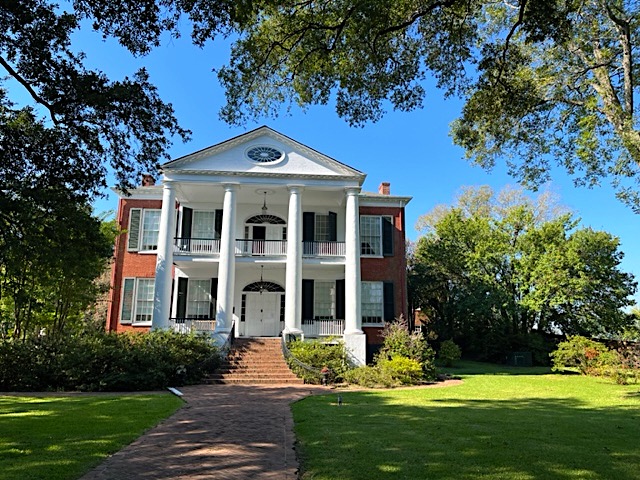
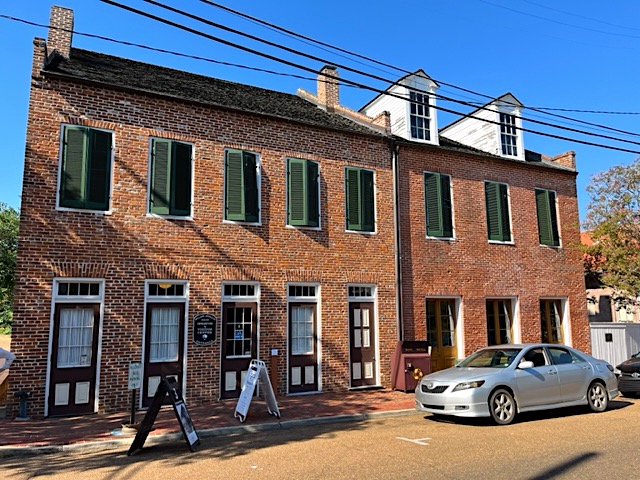
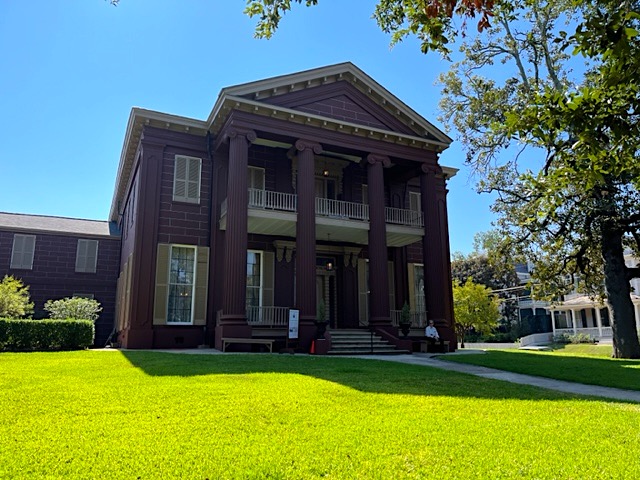
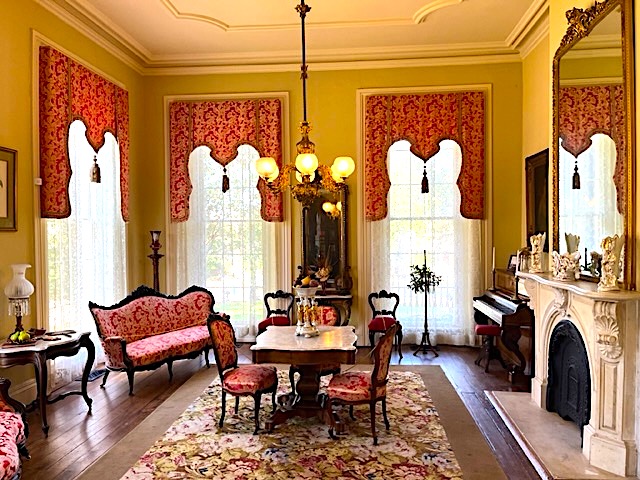
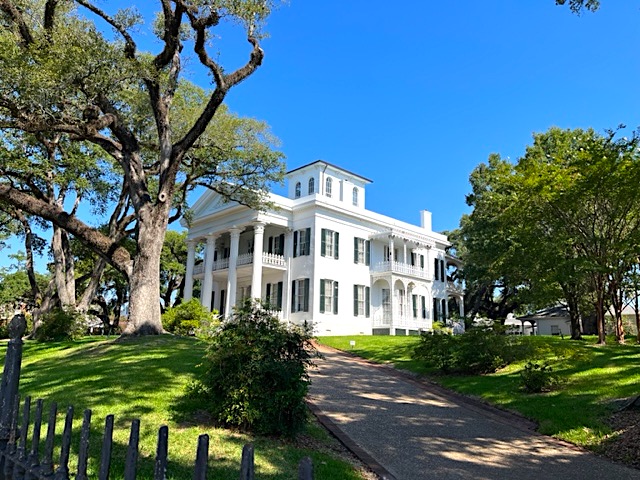
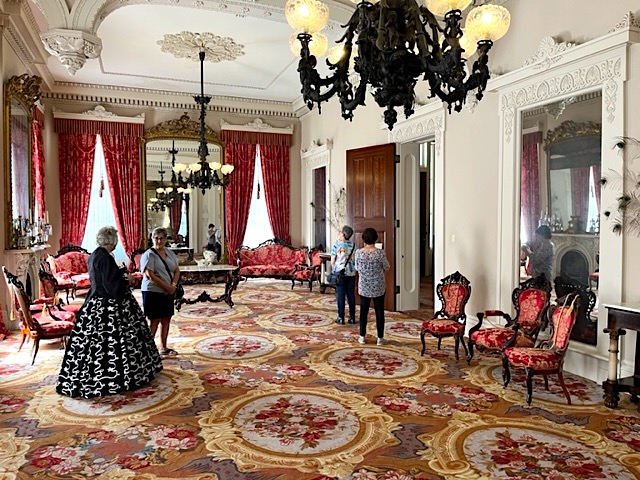
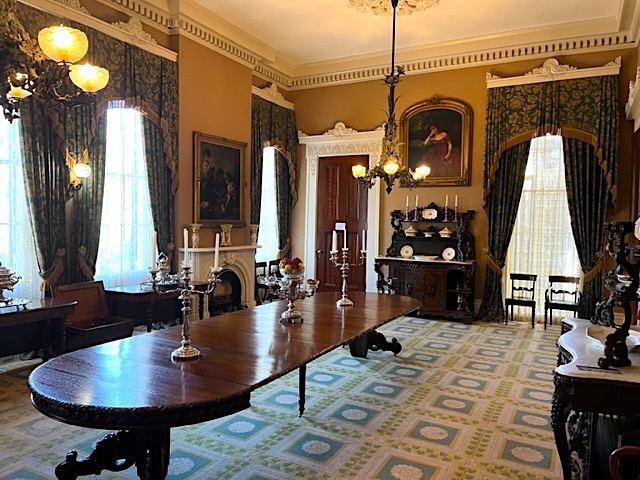
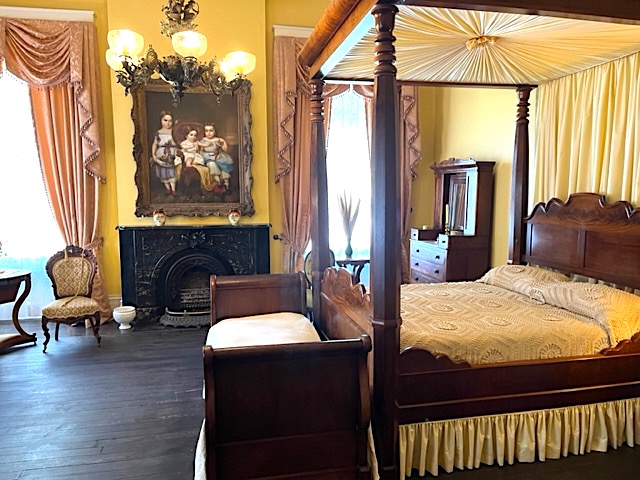
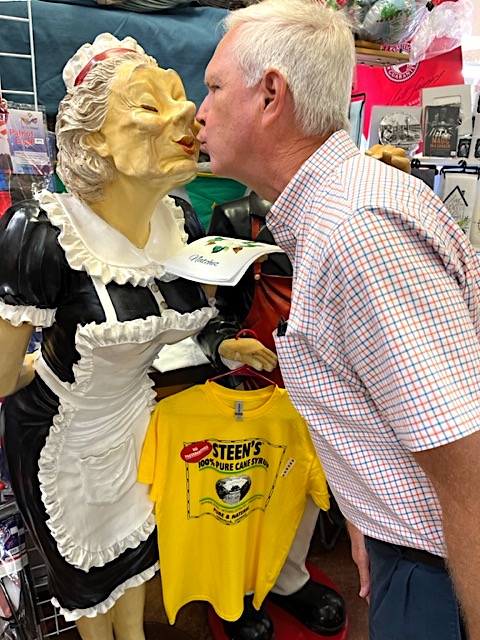
Natchez is about 85 miles north of Baton Rouge, Louisiana, and has a population of about 15,000 inhabitants. It is named after the Natchez tribe of Native Americans who inhabited much of the area from the 8th century AD through the French Colonial period. Natchez was established by French colonists in 1716 and is one of the oldest European settlements in the lower Mississippi River Valley. By 1779, the area was under Spanish rule but in 1797, Major Andrew Ellicott of the US marched to the highest ridge in Natchez and raised the American flag claiming Natchez and all former Spanish land east of the Mississippi above the 31st parallel for the United States.
Preceding the Civil War, Natchez was the most prevalent slave trading city in Mississippi and second in the US only to New Orleans. In 1883 the most active slavers in the US were John Armfield and Isaac Franklin who sold slaves individually, the buyers were allowed to survey the people much like items in a modern retail store.
In town we visited The Old South Trading Post to sample Southern muscadine juice, dips, salsas, jellies, cappuccinos, and coffees. There’s something for everyone here, including a wide selection of books, candies, one-of-a-kind shirts, hats, holiday ornaments, souvenirs, drug store items, and even alligator items! There were 6,000 items on display and for sale.
Our next stop was at the magnificent Rosalie Mansion, an outstanding example of Federal style architecture, built by a wealthy cotton planter in 1823. The Mississippi State Society Daughters of the American Revolution have since gained ownership and have been maintaining the house and grounds since 1938. On this self-guided tour, we discovered the history of the house and the artifacts found throughout. Period-dressed docents throughout the home were there to answer questions and to provide more information. We explored the extensive gardens, gift shop, kitchen, library, and carriage house. The rooms are all beautifully furnished with antiques, accessories and 95% of the personal items from the second and final owners of the home. The home has been a museum since 1958 when the last descendent of the family died after 101 years in the same family.
Our next stop was the William Johnson House. In 1809, Johnson was born the son of a mulatto slave woman in Natchez. At the age of eleven he was emancipated by his white slave owner, also named William Johnson, who is presumed to be his father. Johnson became a well-known barber in town for a mostly white clientele. He not only provided barber services himself, he hired free blacks, had apprentices and also owned slaves. From his barber business he was able to purchase land and become a farmer as well as a business owner.
William Johnson was able to read and write which was unusual at the time and he kept a detailed diary of his life for sixteen years, from 1835 to 1851. This has provided historians with a vast understanding about what it was like to be a free black man during this period of time in this part of the country.
We stopped at Magnolia Hall, a Greek Revival mansion built in 1858 before the breakout of the Civil War but it did not make it through the conflict unscathed. It took a direct cannonball impact to the kitchen, although it is now fully restored. The main floor offers a showcase of many antiques and furnishings and the upper floors offer a costume collection in the Historic Clothing Museum. Upstairs, we viewed a short film that outlined the history of the Natchez pageants and Garden Club, an organization founded in 1927 with the mission to preserve the rich history of the city.
Stanton Hall is a Palatial Greek Revival style mansion built between 1851 and 1857 by Irish immigrant and cotton merchant Frederick Stanton. Frederick built the home as a replica of his ancestral home in Ireland and named it “Belfast.” The palatial home occupies an entire 2-acre city block. The home is approximately 14,000 square feet in size, its lower level has 17-foot-tall ceilings and upstairs there are six spacious bedrooms. Many of the original furnishings continue to be reunited with their original home as family members who inherited them decide to donate them back to the home. It was built at a cost of $83,000 even before it was furnished. Unfortunately, Mr. Stanton only lived in the residence for nine months before he died of yellow fever.
In 1890 the home became the Stanton College for Young Ladies and by 1940 it was acquired by the Pilgrimage Garden Club, which uses it as its headquarters and operates it as a museum and event venue.
The evening’s entertainment was a variety show titled “Anything Goes Tonight” with the crew performing musical numbers from ABBA to Broadway and everything in between. The cast and the band did a great job with the musical numbers.
